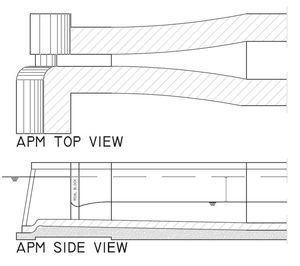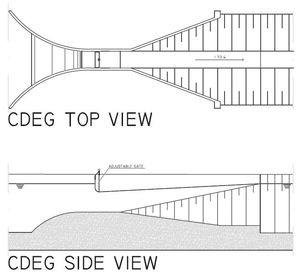Irrigation in the Netherlands East Indies
The figure below is based on the popular game in which one has to spot the differences between two images. In this case, the two images are identical except for one small, but highly important detail. The figure shows two discharge measurement structures: a Crump Adjustable Proportional Module (APM) from former British India and a Crump-De Gruyter structure from the former Netherlands East Indies.


As the names suggest, the structures are related. The British engineer Crump drafted the original design in the Punjab irrigation works. The Dutch engineer De Gruyter adapted the Crump structure and introduced what has become known as the Crump-de Gruyter. The difference between the structures is found in the ability for daily regulation; this is expressed in the presence of an adjustable gate in the Crump-de Gruyter design in contrast with the Crump structure. The roof-block of the Crump structure could be moved with some effort to allow for seasonal differences in water requirements; adjusting the structure daily was not intended. Its design was intended for constant (seasonal) flow. The Dutch engineer De Gruyter replaced the roof-block with an adjustable sliding gate. The result was an adjustable structure that could be used for discharge measurement and regulation. De Gruyter’s adaption highlights the differences between irrigation strategies in former British India and the former Netherlands East Indies. The agrarian policies of the colonial powers appear to be of utmost importance in explaining these differences. Irrigation systems in British India were designed to provide small amounts of water to large numbers of acres, enough to save food crops during drought. The British irrigation approach employed the principle that ‘water follows irrigated surface’. In contrast, the Dutch colonial power levied taxes on actual harvests per unit of land. The general guiding principle of Dutch irrigation was that ‘water follows irrigated crop’: the right amount of water should be distributed when the standing crop needed it. These policies were translated into specific design requirements for water distribution. In this project, these and other issues in colonial irrigation are explored.
If you interested in finding out more about this project, or working on part of it as a BSc. or MSc. contactMaurits Ertsen. See his new book "Locales of happiness. Colonial irrigation in the Netherlands East Indies and its remains, 1830 - 1980". Buy it here.